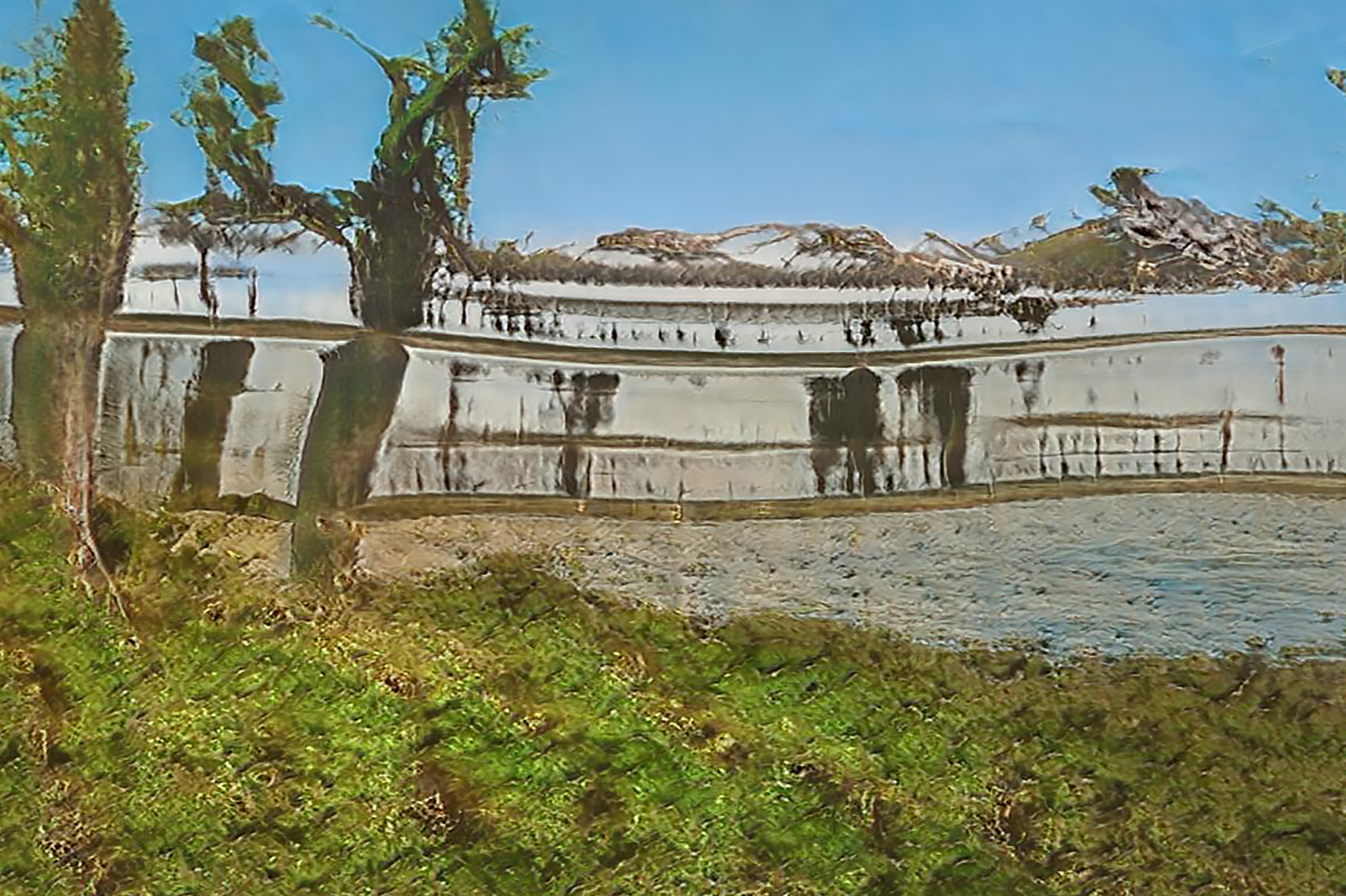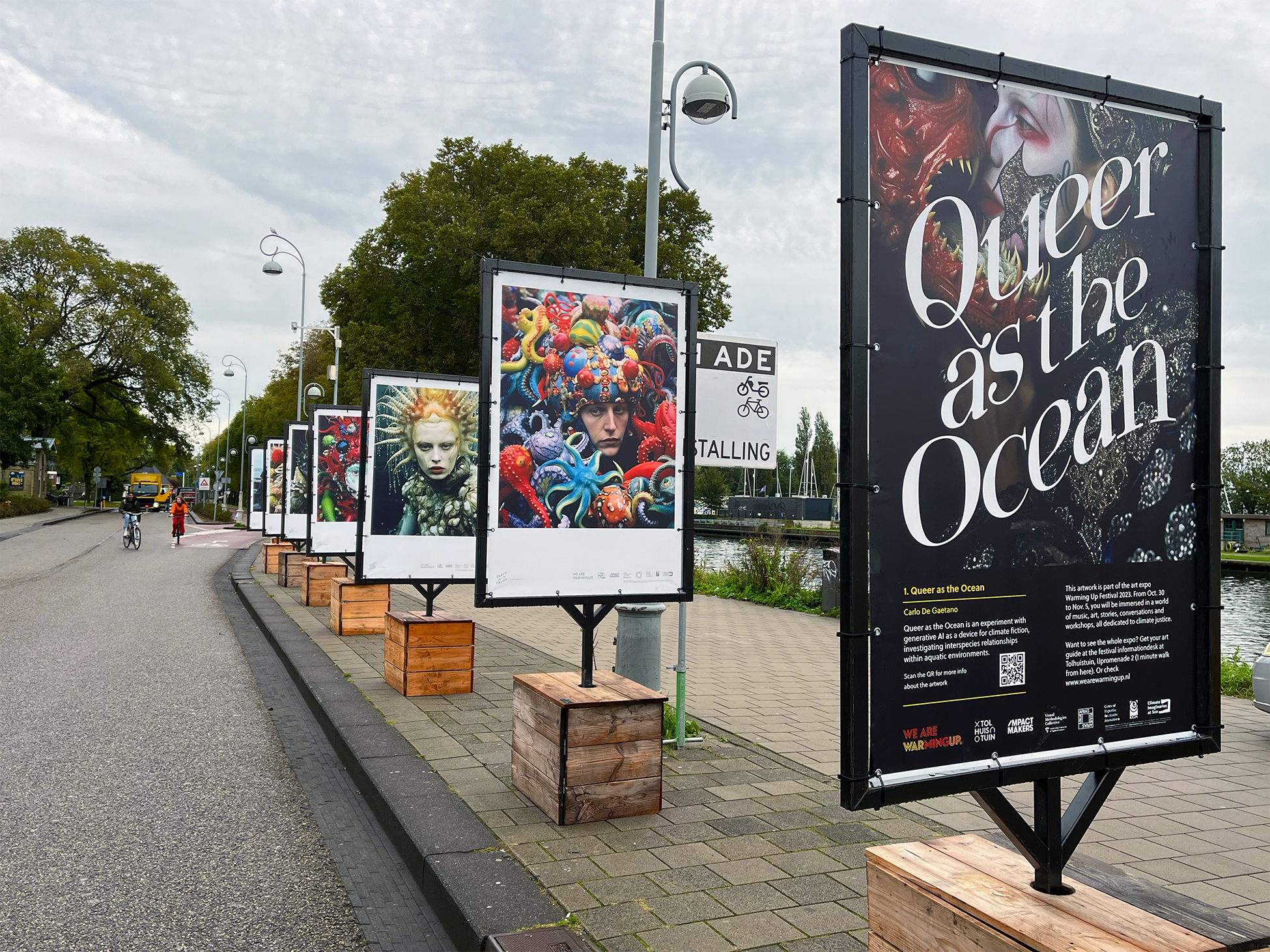
Queer as the Ocean is an experiment with generative AI as a device for climate fiction. This portrait series investigates interspecies relationships within aquatic environments. To make this series, I worked with Midjourney to imagine a time when human and water ecosystems have become one. By queering their relationship and staging it as a fictional fashion shoot, this experiment wants to create a playful space where the boundaries between human and more-than-human dissolve; both can face each other, enjoy moments of intimate connection, and find acceptance in a future in which they both will change. The visual research is an opportunity to engage with questions on authorship and ethics of using generative AI: are we looking at images co-created by a human and a machine, or were they just uncovered from the machine’s latent space? Can AI be employed as a queering tool, despite its inherent biases, and support climate imaginaries, despite its opaque environmental impacts and problematic hidden labor?
In my artistic research within the Visual Methodologies Collective, I play with fiction to evoke reflections and conversations about our interconnectedness with nature and other beings. I curate and explore audiovisual collections from the Institute for Sound & Vision archives and online spaces to understand how bodies of water of the Netherlands and their ecosystems are presented in the collections. Using computer vision, visualization techniques, and generative AI, I facilitate participatory workshops to collectively explore interspecies relationships within the collections, uncovering predominant, underrepresented, or missing media representations of nature. Following this collective scrutiny, a process of climate fiction-making occurs, where narratives from the collections are amplified, countered, or recombined to imagine alternative human interactions with the more-than-human.
Queer as the Ocean has been developed as part of the artistic research studio on Interspecies Inquiry, a collaborative venture of the Visual Methodologies Collective (AUAS), Art & Spatial Praxis (Rietveld Academie), and DAS research (AHK) as part of their collaborative program Climate Imaginaries at Sea. The program, running until 2024, makes use of artistic and participatory research practices to envision futures related to water. Climate Imaginaries at Sea is part of the Art Route NWA-project 'Bit by bit, or not at all' funded under the 'Small Projects' scheme by the Dutch Research Council (NWO), and also supported by the Centre of Expertise for Creative Innovation (CoECI) and ARIAS platform for artistic research in Amsterdam.





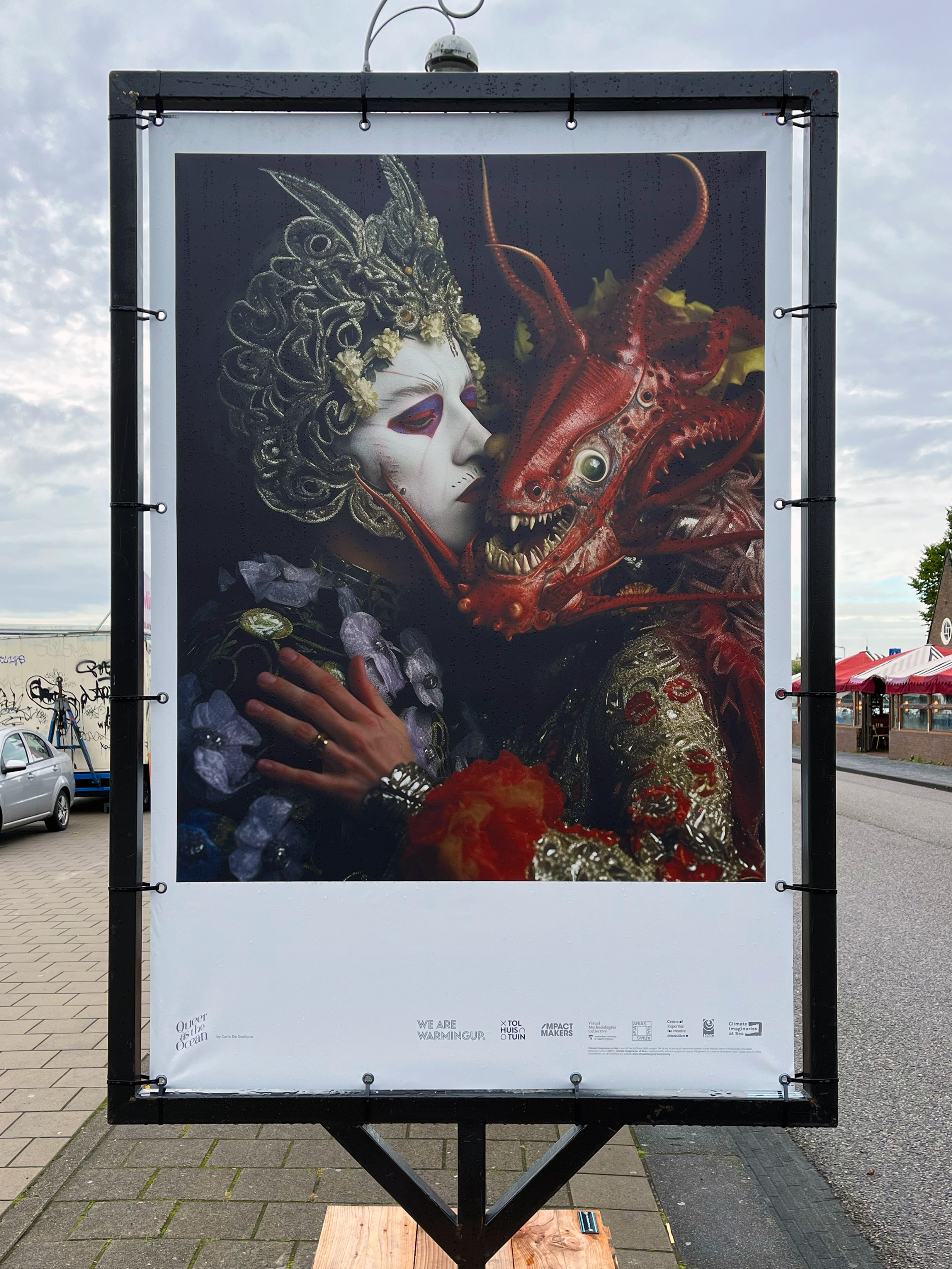













Finalist in the Regenerative Futures AI design competition, and showcased at Space10.

Imagine a community of floating farmhouses for living in higher waters. The community is embedded in Dutch water ecosystems and prioritizes sustainability, resilience, innovation, flexibility, and community integration. This is a response to the current housing crisis and to the potential impacts of rising sea levels in the Netherlands. The concept looks at radical architects of the past to imagine future solutions of living with care, both from human and more than human perspectives.

The proposal looks at existing regenerative projects of floating housing in the Netherlands and other countries and collaborates with different AI generative models to distill key factors of living sustainably within Dutch ecosystems. Based on good practices, the proposal focuses on the concept of a Dutch floating farm housing community, imagined in a possible future scenario with higher water levels. The proposal highlights these characteristics: environmental sustainability, resilience to climate change, innovative design and technology, flexibility and adaptability, and community integration.

The proposal incorporate measures to mitigate the potential impacts of rising sea levels in the Netherlands. We included green roofs and walls, water harvesting systems, and smart home automation that enable the house to generate its own resources and reduce its ecological footprint. As floating houses may need to move due to changing water levels, the design is flexible and adaptable to accommodate different locations and environments. Moreover, we incorporated elements, such as shared green spaces and common areas, that promote interaction and community engagement.

The concept of the floating farmhouse community is centered on two main principles: blending with and nurturing Dutch local biodiversity and water ecosystems and creating a community based on sharing spaces and goods. The design of the farm/houses provides nesting possibilities for local species of birds, bats, and insects and protects water wildlife through the use of diverse water-based crops. The modular nature of the farm/houses allows for flexibility in the changing environment, fosters place-based production of building materials and encourages goods and skill sharing within the community.

At the Visual Methodologies Collective, we are developing artistic research to imagine future scenarios of living in the Netherlands with higher waters. Through collaborations with the Royal Dutch Meteorological Institute, geography teachers, students from local schools, and artists, we are setting up a series of experiments to support collective imaginative processes of such scenarios. The outcomes of such experiments, which include educational materials with high school students, speculative landscaping exercises, artist studios, and exhibitions, informed this proposal.

The Netherlands, especially in the high-density populated areas, is experiencing a housing crisis. This, combined with the prospect of re-negotiating habitable spaces with the sea, calls for new living imaginaries. In our vision, water is not only a threat to our present living environment but also a source of subsistence and habitat for many animal and plant species. Similarly, it does not reduce humans to mere polluters but resituates them as part of nature. Our proposal also imagines a stronger sense of living in a (more-than)human community as part of this process of resilience and regeneration.



We first asked ChatGPT to suggest names of architects that put sustainability as a core value of their work. The results were not quite working for us, so we decided to reference Superstudio, the Italian architecture collective founded in 1966. We particularly like their radical views on architecture as a means for social change, their activism aimed at raising awareness of the harmful impact of construction on the natural environment, and the airy feeling of their vision of future living.






This work explores the feeling of longing I experience every time I return to the home I grew up in, in Milano. Returning feels like leaving, and home welcomes you with memories that linger.






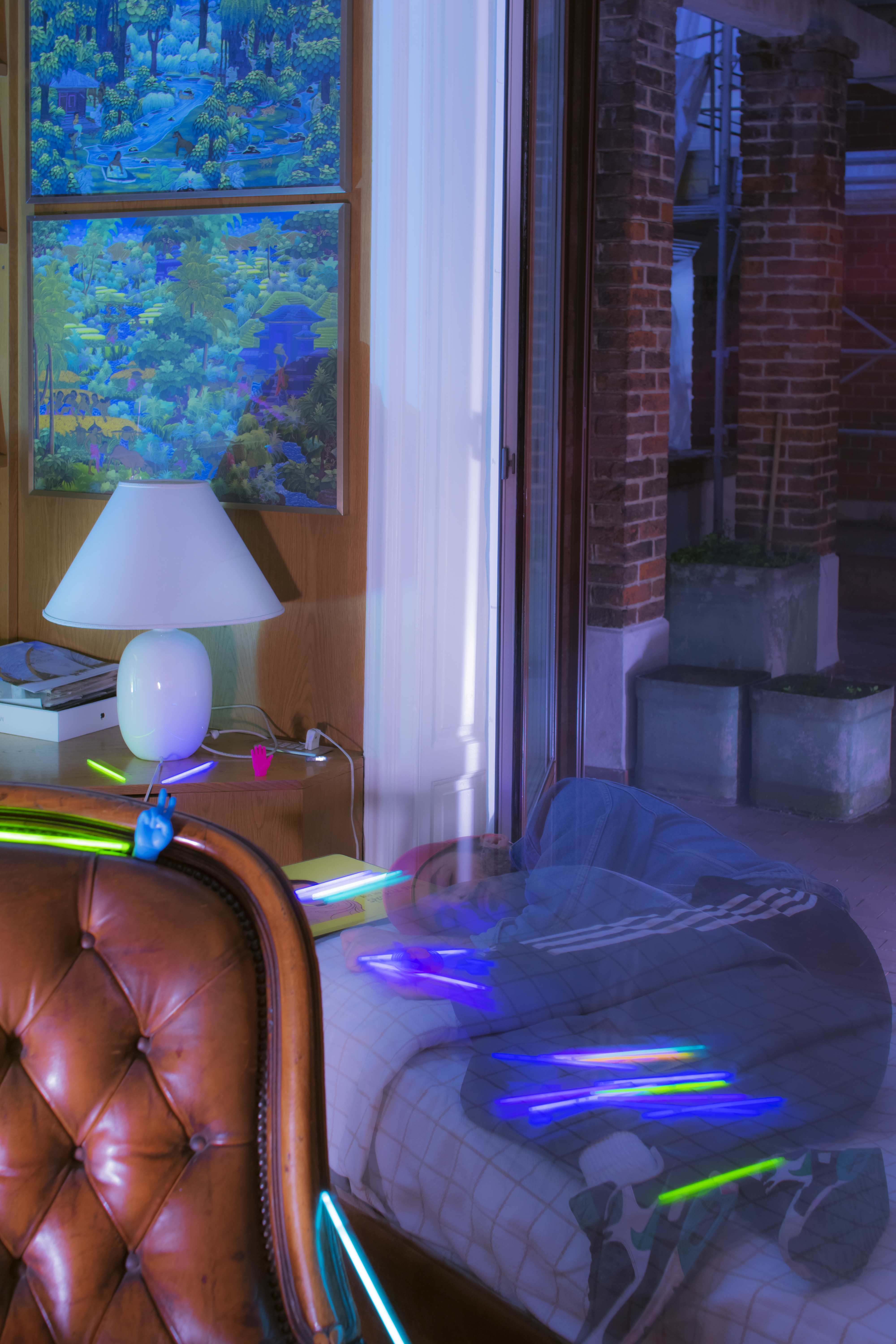
Walking through Milan and looking at the pictures in the windows of travel agencies,
one finds himself in incredible places.
Once there, how could one possibly not send a postcard home?
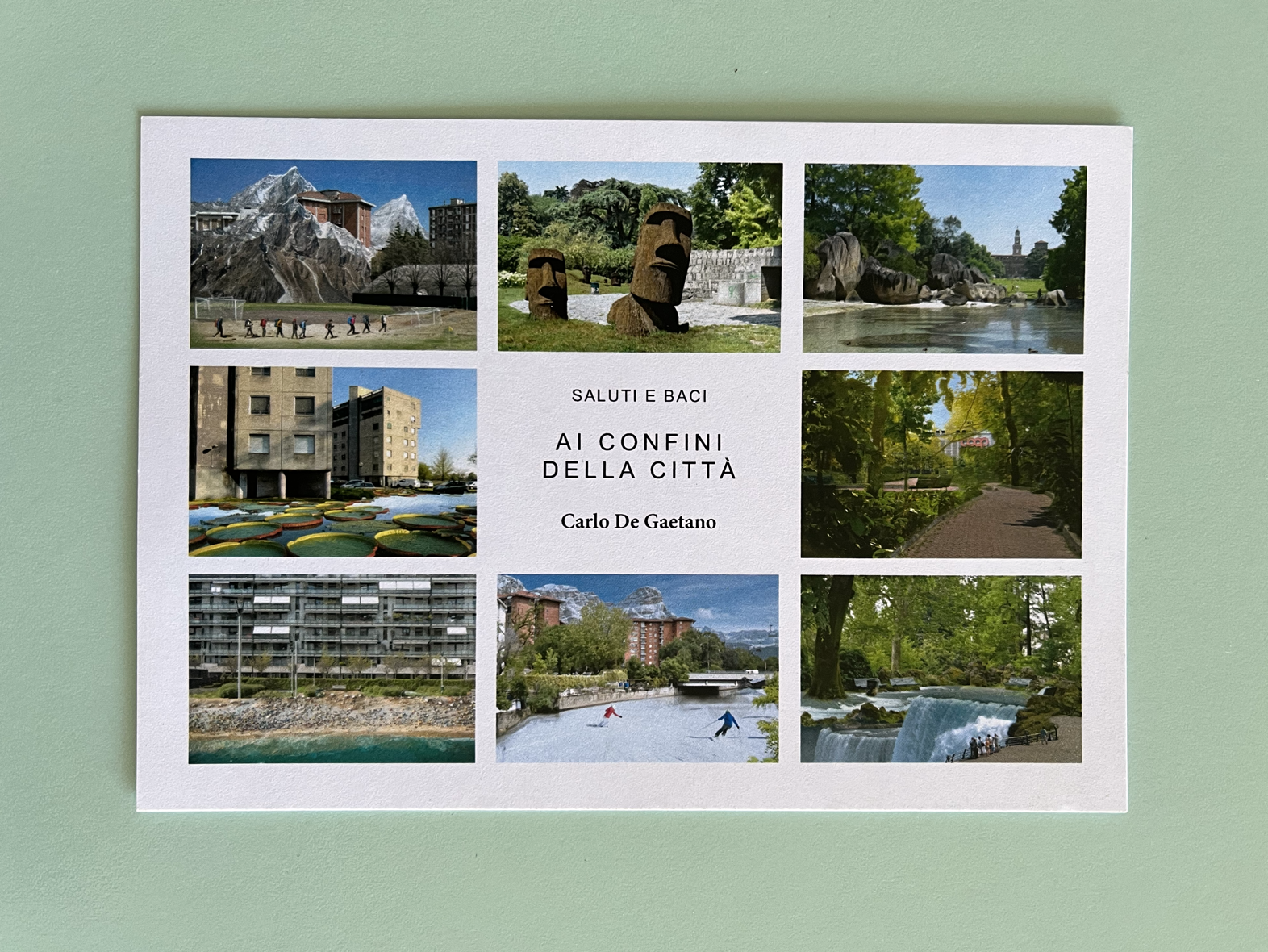















Snapshots of a world as seen by a machine trained to look at landscapes endangered by climate change. I navigated the latent space of the machine and saved the most vulnerable places.
Feel free to move around the images and take care of your own personal landscape*
*Desktop version only :(


